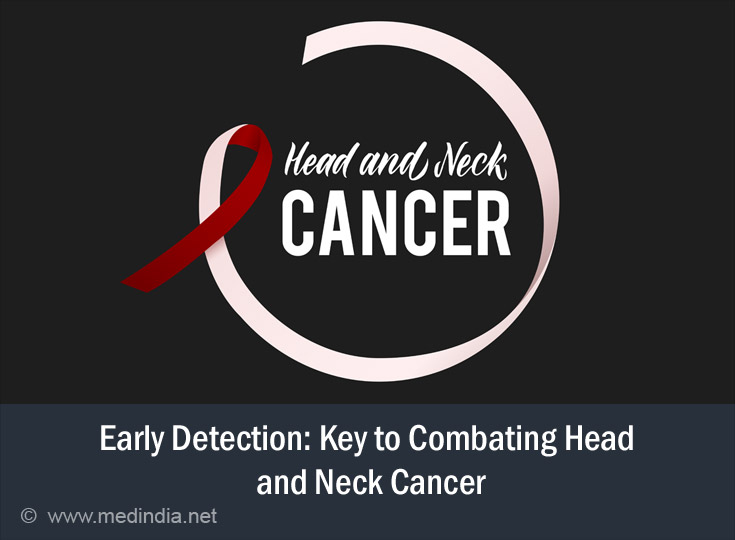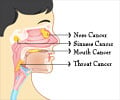- Cancer incidence estimates for 2022 & projection for 2025: Result from National Cancer Registry Programme, India - (https://pubmed.ncbi.nlm.nih.gov/36510887/)
- Head and neck cancer: Current challenges and future perspectives - (https://pubmed.ncbi.nlm.nih.gov/34353444/)
- Interaction between tobacco and alcohol use and the risk of head and neck cancer: pooled analysis in the International Head and Neck Cancer Epidemiology Consortium - (https://pubmed.ncbi.nlm.nih.gov/19190158/)
- Oral and Systemic Health Implications of Electronic Cigarette Usage as Compared to Conventional Tobacco Cigarettes: A review of the literature - (https://pubmed.ncbi.nlm.nih.gov/37553278/)
- Head and neck cancer explained: an overview of management pathways - (https://www.ncbi.nlm.nih.gov/pmc/articles/PMC9650163/)
- Head and neck cancer - (https://pubmed.ncbi.nlm.nih.gov/34562395/)
About
The incidence of cancer in India is on the rise. According to GLOBOCAN 2020, the number of new cancer cases in India is expected to reach 2.1 million by 2040, up by 57.5% from 2020 (1✔ ✔Trusted Source
Cancer incidence estimates for 2022 & projection for 2025: Result from National Cancer Registry Programme, India
Go to source). Among these, mouth cancer is the most prevalent, especially among males, accounting for over 20% of all cancer cases. Head and neck cancers (HNCs) are becoming increasingly common, posing significant health challenges and impacting the quality of life for many individuals.
Did You Know?
Chewing supari (areca nut) without tobacco is also linked to an increased risk of mouth cancer. Recent research confirms its carcinogenic potential.
Types of Head and Neck Cancers
Head and neck cancers encompass a range of malignancies that can occur in various regions, including the mouth, throat, thyroid, and parotid glands. In India, the most common types are mouth and throat cancers. These cancers can severely affect daily functions such as eating and speaking, leading to discomfort and deformity. The prevalence of HNCs highlights the urgent need for better awareness and early preventive measures.
Causes of Head and Neck Cancer
The primary causes of head and neck cancer include (2✔ ✔Trusted SourceHead and neck cancer: Current challenges and future perspectives
Go to source):
- Tobacco use (smoking and chewing)
- Alcohol consumption
- HPV infection
- Poor oral hygiene
- Prolonged exposure to certain chemicals
Tobacco and Alcohol: The Main Causes of Head and Neck Cancer
Tobacco and alcohol are the primary risk factors for head and neck cancer. In India, tobacco use is widespread and comes in various forms, including smoking and chewing. The rising incidence of smoking, particularly among young women, is alarming and often driven by growing social acceptance. The combination of tobacco and alcohol consumption significantly increases the risk of developing mouth and throat cancer. Studies indicate that while smoking alone triples the cancer risk, alcohol alone does the same. When combined, the risk multiplies to nine times that of the general population (3✔ ✔Trusted Source
Interaction between tobacco and alcohol use and the risk of head and neck cancer: pooled analysis in the International Head and Neck Cancer Epidemiology Consortium
Go to source).

The Emerging Threat: HPV-Related Throat Cancer
Beyond the known risk factors, India is witnessing an increase in HPV-related throat cancers. The human papillomavirus (HPV), a sexually transmitted virus, can spread through oral sex. Once infected, HPV can embed itself in the DNA of the throat's lining cells, eventually transforming them into cancerous cells. This type of cancer typically develops in the neck, back of the tongue, or tonsil area. While already an epidemic in the West, with HPV-related throat cancer accounting for 90% of cases in some regions, it is beginning to rise in India. Experts predict a significant increase in HPV-related throat malignancies over the next decade.
Prevention of Head and Neck Cancer
Quitting tobacco and alcohol can significantly reduce the risk of developing head and neck cancer, but it does not eliminate it entirely. The damage caused by these carcinogens is often permanent, and the body's ability to repair this damage is limited. Therefore, even decades after cessation, individuals remain at risk of developing cancer. Preventing head and neck cancer requires a multifaceted approach. Public health initiatives should focus on reducing the initiation of tobacco and alcohol use, especially among teenagers. Awareness about the dangers of HPV and the importance of safe sexual practices should be increased. Moreover, dispelling myths about vaping and emphasizing its potential risks is crucial.
Does Vaping Lower the Risk of Cancer?
Vaping, often marketed as a safer alternative to smoking, is gaining popularity among young people. However, the long-term health effects of vaping are not entirely understood. Although less toxic than smoking, vaping still involves inhaling numerous chemicals, which can lead to lung and brain damage and potentially cause cancer. It is crucial to recognize that vaping is not completely safe, and its health risks will become more apparent as more data emerges (4✔ ✔Trusted Source
Oral and Systemic Health Implications of Electronic Cigarette Usage as Compared to Conventional Tobacco Cigarettes: A review of the literature
Go to source).
Symptoms of Head and Neck Cancer
Early detection of head and neck cancer can significantly improve treatment outcomes. Some common symptoms include (5✔ ✔Trusted SourceHead and neck cancer explained: an overview of management pathways
Go to source):
- Persistent sore throat
- Difficulty swallowing
- Hoarseness or voice changes
- Unexplained weight loss
- Swelling or lumps in the neck
- Ear pain or hearing loss
Treatment of Head and Neck Cancer
Treatment for head and neck cancer depends on the type, location, and stage of the cancer. Common treatment options include surgery, radiation therapy, chemotherapy, and targeted therapy (6✔ ✔Trusted Source
Head and neck cancer
Go to source). Early detection and a comprehensive treatment plan can improve the chances of successful outcomes.
The rising incidence of head and neck cancers in India underscores the need for increased awareness, early detection, and preventive measures. While tobacco and alcohol use remain significant risk factors, the emerging threat of HPV-related throat cancer and the misconception of vaping's safety add complexity to the issue. Public health efforts must focus on educating the population about these risks and promoting healthy lifestyle choices to combat the growing cancer burden in India.










